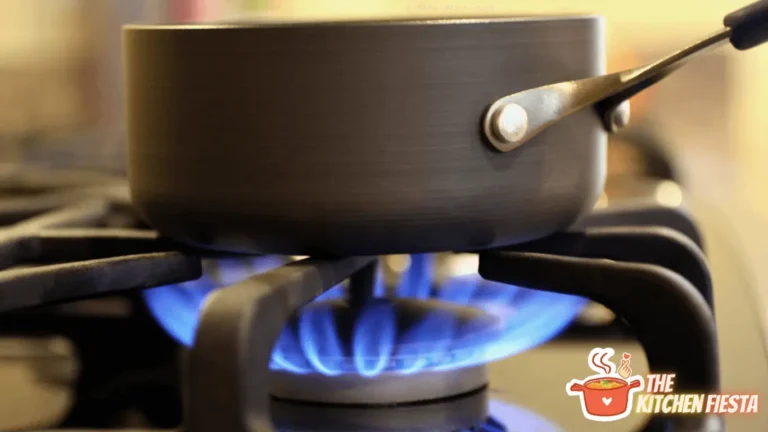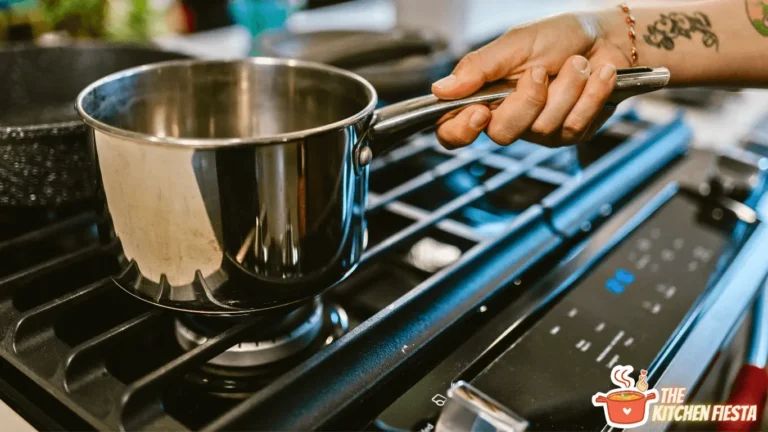How to Ship a Stove: A Step-by-Step Guide

Shipping a stove can seem daunting, especially if it is your first time. However, it can be done safely and efficiently with the right preparation and knowledge. Whether moving to a new home or sending a stove to a buyer, there are several things to remember when shipping this large and heavy appliance.
First and foremost, it’s important to prepare the stove for shipping properly. This includes thoroughly cleaning, disconnecting gas or electrical connections, and removing detachable parts. It’s also a good idea to take photos of the stove before packing it up in case any damage occurs during transit. Once the stove is prepared, it’s time to choose a shipping method and carrier that can handle the size and weight of the appliance.
Understanding Stove Types
When shipping a stove, it’s important to understand the type of stove you have. This will help you determine the best way to pack and ship it to ensure it arrives at its destination safely. Here are some common types of stoves and their characteristics:
1. Gas Stoves
Gas stoves use natural gas or propane to heat the burners. They are typically more expensive than electric stoves. Still, they are preferred by many professional chefs for their precise temperature control and instant heat. When shipping a gas stove, it’s important to disconnect the gas line and secure the burners to prevent damage.
2. Electric Stoves
Electric stoves use electricity to heat the burners and oven. They are generally less expensive than gas stoves but may provide a different level of temperature control. When shipping an electric stove, securing the burners and oven racks is important to prevent them from shifting during transit.
3. Wood-Burning Stoves
Wood-burning stoves are typically used for heating rather than cooking. They use wood as fuel and require a chimney or flue to vent the smoke. When shipping a wood-burning stove, it’s important to clean the chimney or flue and secure any loose parts to prevent damage.
4. Antique Stoves
Antique stoves are often made of cast iron and may be either gas or wood-burning. They are typically heavier and more fragile than modern stoves. When shipping an antique stove, it’s important to pack it with plenty of padding and secure any loose parts to prevent damage.
Preparation Before Shipping
Cleaning the Stove
Before shipping a stove, it is important to clean it thoroughly. This will not only make it easier to handle, but it will also prevent any unpleasant odors during shipping. Here are some steps to follow when cleaning a stove:
- Remove all grates, burners, and other removable parts and clean them separately.
- Wipe down the stove with a damp cloth to remove any loose debris.
- Use a degreaser or oven cleaner to remove stubborn stains or grease buildup.
- Rinse the stove with clean water and dry it thoroughly.
Disassembling the Stove
In some cases, it may be necessary to disassemble the stove before shipping it. This will make it easier to handle and reduce the risk of damage during shipping. Here are some steps to follow when disassembling a stove:
- Turn off the gas supply and unplug the stove from the electrical outlet.
- Remove any remaining parts that can be easily removed, such as knobs, grates, and burners.
- If the stove has a glass top, remove it carefully and wrap it separately in bubble wrap.
- If the stove has a removable oven door, remove it and wrap it separately in bubble wrap.
- If the stove has a back panel, remove and wrap it separately in bubble wrap.
By following these steps, you can prepare your stove for shipping and ensure that it arrives at its destination in good condition.
Packing the Stove
Materials Needed
Before packing the stove, gather the necessary materials. The following items are recommended:
- Heavy-duty moving blankets
- Packing tape
- Bubble wrap
- Packing paper
- Box cutter
- Measuring tape
- Moving dolly
- Straps or bungee cords
Step-by-Step Packing Guide
Disconnect the stove from the gas or electric source. If it is a gas stove, turn off the gas supply valve.
- Remove all detachable parts, such as knobs, racks, and burners. Wrap them individually with bubble wrap and packing paper, and place them in a separate box.
- Measure the dimensions of the stove, including its height, width, and depth. This will help determine the size of the moving box needed.
- Wrap the stove with heavy-duty moving blankets, securing them with packing tape. Make sure to cover all sides of the stove, including the top and bottom.
- Use bubble wrap or packing paper to protect exposed parts or delicate areas, such as the oven door or control panel.
- Place the stove on a moving dolly, and use straps or bungee cords to secure it.
- Carefully load the stove onto the moving truck, ensuring it is upright and does not shift during transit.
Following these steps, the stove will be properly packed and ready for safe transport to its new location.
Choosing a Shipping Company
When shipping a stove, choosing the right shipping company is crucial. The following are some factors to consider when selecting a shipping company:
1. Reputation
It is essential to choose a shipping company with a good reputation. Look for reviews and ratings from previous customers, and check the company’s standing with the Better Business Bureau (BBB) or other relevant organizations.
2. Experience
Experience is another crucial factor to consider when choosing a shipping company. Look for a company with experience shipping large appliances, such as stoves, and a good track record of delivering them safely and on time.
3. Services Offered
Different shipping companies offer different services, so choosing one that offers the services you need is essential. For example, some companies may only offer ground shipping, while others offer air or sea freight. Some companies may offer packing and crating services, while others may not.
4. Cost
Cost is always a factor when shipping any item, and stoves are no exception. Compare shipping quotes from different companies to find the best price, but consider the company’s reputation and experience.
5. Insurance
Make sure the shipping company offers insurance for your stove during transit. This will protect you in case of any damage or loss during shipping.
Insurance and Liability
When shipping a stove, it is important to consider insurance and liability coverage. Accidents can happen during transportation, and it is important to ensure that your stove is protected.
Most shipping companies, including USPS, FedEx, and UPS, offer package insurance and liability coverage. However, the coverage and cost may vary depending on the carrier and the value of the stove.
USPS offers up to $100 standard shipping insurance with Priority Mail Express, Priority Mail, and USPS Ground Advantage. Additional insurance can be purchased for a fee. FedEx provides liability coverage for mishandling shipments valued at $100 or less, with the option to add additional coverage through Shipsurance. UPS also offers insurance coverage, but the cost and coverage limit depends on the value of the stove.
It is important to note that insurance and liability coverage may not cover damages caused by improper packaging or handling. It is recommended to properly package the stove to minimize the risk of damage during transportation. This may include using sturdy boxes, padding, and securing the stove to prevent movement.
In the event of damages during transportation, it is important to file a claim with the carrier as soon as possible. The carrier may require documentation such as proof of value and photos of damages. It is recommended to keep all shipping documents and receipts for reference.
Delivery and Installation
Regarding stove shipping, delivery and installation are critical aspects that require careful consideration. The following section provides an overview of the key factors to keep in mind to ensure a successful delivery and installation process.
Delivery
The first step in the delivery process is to ensure that the stove is properly packaged and secured for transport. This is especially important for larger stoves, as they can be heavy and difficult to maneuver. Most shipping companies will require that the stove is crated or palletized to ensure safe transport.
The next step is to arrange delivery once the stove is packaged and ready for shipment. Many shipping companies offer a range of delivery options, including standard ground shipping, expedited shipping, and white glove delivery. White glove delivery is typically the most comprehensive option, including delivery, installation, and removal of the old stove.
Before the stove is delivered, it is important to ensure that the delivery location is accessible and that there is sufficient space to install it. This may require measuring the space and ensuring the stove fits through doorways and hallways.
Installation
Once the stove has been delivered, the next step is to install it in its final location. This typically requires the services of a professional installer, as stoves can be complex and require specialized knowledge to install properly.
Before installation, ensuring the stove is compatible with the existing electrical and gas connections is important. This may require upgrading the electrical or gas lines to ensure they can handle the load of the new stove.
During installation, the installer will typically connect the stove to the electrical and gas lines and ensure it is properly secured. They may also test the stove to ensure it is functioning correctly and provide instructions on using it safely.
Conclusion
Shipping a stove can be a daunting task. Still, proper preparation and packaging can be done safely and efficiently. It is important to take the necessary precautions to ensure that the stove arrives at its destination in good condition.
When preparing a stove for shipping, it is important to disconnect it properly and clean it thoroughly. This will help prevent any damage during transit and ensure that the stove is ready to use once it arrives at its destination.
When packaging a stove, using the right materials, such as bubble wrap, packing peanuts, and sturdy boxes, is important. It is also important to label the package clearly and accurately, indicating that it contains a stove and which side should be facing up.
There are several shipping options available for stoves, including unpacked and packed transport. Choosing the option that best suits your needs and budget is important.
All in all, shipping a stove requires careful planning and attention to detail. By following the tips and guidelines outlined in this article, you can ensure that your stove arrives at its destination safely and in good condition.
Frequently Asked Questions
What shipping carrier is best for shipping appliances?
Choosing the best shipping carrier for your stove depends on several factors, including the size and weight of the appliance, the destination, and your budget. Some popular shipping carriers for large appliances include FedEx Freight, UPS Freight, and YRC Freight. It’s important to research each carrier’s rates, services, and track record before deciding.
How much can I expect to pay for shipping a stove?
The cost of shipping a stove varies depending on several factors, including the size and weight of the appliance, the destination, and the shipping carrier. On average, stove shipping can cost anywhere from $200 to $500 or more. It’s important to obtain quotes from multiple carriers and compare rates before deciding.
Can I schedule a pickup for my stove to be shipped?
Yes, many shipping carriers offer pickup services for large appliances like stoves. Contact the carrier to schedule a pickup time and provide the necessary information about the shipment. Ensuring someone can assist with loading the stove onto the carrier’s truck is important.






